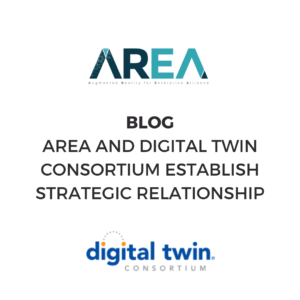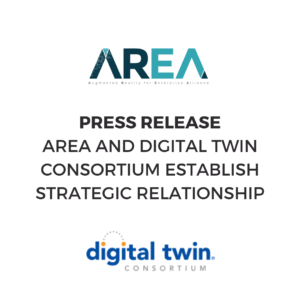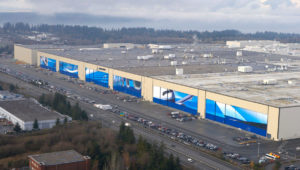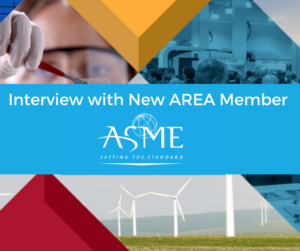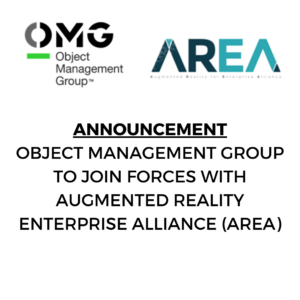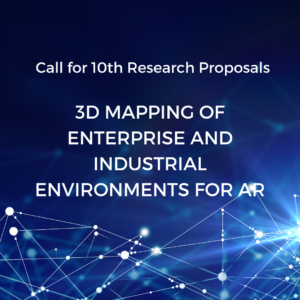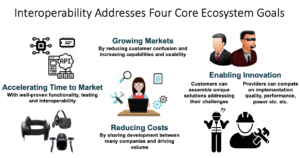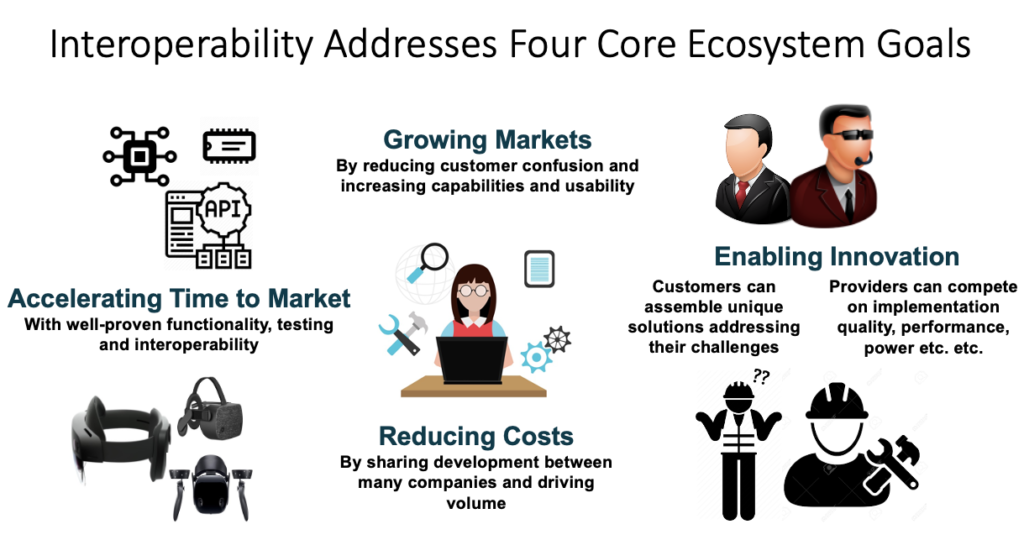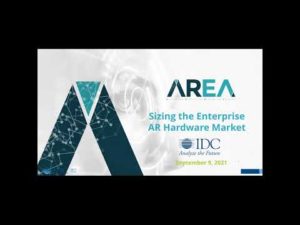Inside the AREA Requirements Committee with Brian Kononchik
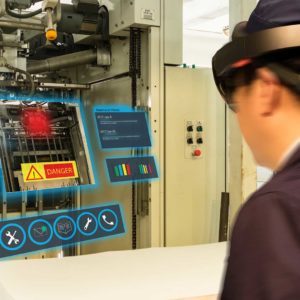
The work of the AREA is largely driven by its member committees: Research, Interoperability & Standards, Safety, Human Factors, Requirements, Marketing, and Security. Each of these groups is focused on activities that contribute to the development of knowledge about the adoption of enterprise AR and the practical implementation of AR use cases. For AREA members, participation in one or more of the AREA committees is an opportunity to share expertise, interact with other experts, and make a meaningful impact on the future of enterprise AR.
This is the third in a series of blog articles exploring the committees and their work. Our guide to the AREA Requirements Committee was Brian Kononchik, the Committee’s chair and Director of Innovative Technologies at Boston Engineering.
AREA: Tell us how you got into enterprise AR.
Kononchik: About 12 years ago, I started my career working alongside a prominent advanced technology investor and visionary. Together, we worked as contractors and consultants to some big names in the consumer electronics and automotive space. During that time, I realized that the status quo is never good enough, there needs to be more. That’s when I shifted my focus to innovation instead of that status quo. That’s how I became an early adopter of VR technology, holographics, and eventually AR. After a while, I jumped to an engineering firm that did development work for Siemens, which is, of course, a very big name in manufacturing with equipment, PLCs, PLM, and CAD platforms.
While I was there, one of the largest submarine manufacturers in the world needed an innovation engineer on their advanced technology team. The assignment was to create an immersive VR experience that utilized existing CAD data to provide an experience where a user can enter a submarine, navigate freely, and plan for job assignments. That led to more projects and eventually including Augmented Reality answering the questions: How can we use AR to help shipbuilders? How can we merge AR and VR to help shipbuilders collaborate and work more effectively?
Then about five years ago, the need for AR at scale became more and more prominent. I then went to work for PTC as a Director of Product Management for the Spatial AR initiative working with big name manufacturers in the automotive, semi-conductor, and manufacturing equipment space. That experience eventually brought me over to Boston Engineering where I’m now leading the Industry 4.0, Innovative Technology initiatives. I’m all about giving people value, and enterprise AR is delivering on that promise.
AREA: For our readers who aren’t familiar with it, what does the AREA Requirements Committee do?
Kononchik: We’re working in collaboration with a lot of big organizations involved with the AREA to help define global standards for hardware and software. When I say hardware, I am talking about mobile devices like the iPhone or Galaxy s20, Assisted Reality devices like RealWear, and fully-immersive, head-mounted displays, like the Magic Leap and HoloLens 2. We’re trying to define a set of standards that people could build hardware against. Having universal standards will allow for increased technology adoption.
On the software side, we’re trying to do something similar. We’re trying to lay out a set of standards for people that want to go build AR enterprise applications. After all the requirements are finalized, the next big thing we’re going to do is build out an automated process to help someone understand the starting point for addressing their particular use case. So, you would input your industry and use case. Say you’re in the oil and gas industry and you have the challenge of individuals collaborating while they are not in the same location. That would be a remote assistance use case. You then need to input your environment. In this scenario, you specify that the work is being performed mainly outside. Those are your three starting variables: oil and gas, remote assistance, and outside. We’re working on an automated process that recommends options; the more details you provide, the better the recommendation. We’re not just trying to define requirements. We’re trying to define requirements for use cases and provide a way to streamline adoption within an organization.
AREA: It sounds like you’re working two sides of the equation here. You’re pushing for standards on one end and providing guidance to adopters on the other.
Kononchik: Correct. We have our set of standards being developed, and then we have the AREA Statement of Needs, or ASoN, tool. It’s designed to help others identify the AR setups related to their use cases. These setups can be actions taken right away to get AR implemented into their organizations.
AREA: On the standards side, are you looking at work that standards bodies are already doing and making recommendations about which standards to implement?
Kononchik: It’s a combination. For example, we break hardware down into many different categories: wearability, sensors, communications, audio, and so forth. For each category, you have a breakdown of different device types. For example, sensors. You have mobile, assisted, and fully immersive head-mounted devices (HMD). A requirement for a fully immersive HMD should have no fewer than two world cameras because that will help you compute your 3D world maps. A device should also have at least a single RGB camera because that will help with QR code recognition and remote assist scenarios. So, those are some of the hardware type standards being developed.
When it comes to safety, though, we reference the industry standards. There are already existing environmental standards, say regarding operational temperature range, that hardware manufacturers must follow. So, we just reference those standards that exist. And then, where standards don’t exist, we’re trying to collectively understand what can be done today and where the market is going to establish new standards which organizations do not necessarily follow today.
AREA: The ASoN tool has been available for a while now. What’s the latest on that?
Kononchik: It is currently running on an older platform, and we are in the process of upgrading the application and migrating the data over to a new platform. So, people can use it and benefit from it today, but we are looking to cleanse the tool eliminating some bloat that accumulated over time. It is accessible and fully operational today and should be used and benefited from.
AREA: Do you have a wish list of things you’d love to see the Requirements Committee get done in the near future?
Kononchik: Right now, I want to see us go through and overhaul the hardware and software requirements and collectively agree on what they should be. We’re in the process of that now. Beyond that, my goal is to make the ASoN tool everything it’s promising to be. I would love to see it work so that, if say I were an automotive industry member and I entered in a very few parameters, I would get a full spec readout of what I needed to do next and why I need to do it. It’s not there yet, but I would love to see that.
AREA: Is that doable in the near future?
Kononchik: I would say within the next year, probably yes. That granularity will be well along its way. We have a lot of great minds working with us in this Requirements Committee – a lot of industry experience and industry knowledge, and not just hardware building and software development-specific. We also have input from the community members who focus on consulting with organizations, and they really understand what customers are looking for. When we join all this knowledge together, it really comprises the three pillars of successful AR implementation and development.
AREA: What kind of people are you looking for to become part of the Requirements Committee? Are there certain skills you need or certain types of people that you’re hoping can join the group?
Kononchik: We’re looking for multiple types of skillsets. First off, we’re looking for members of the hardware and software communities – smaller startups, enterprises, and places with new innovative solutions. And within those sectors, we’re looking for product leaders. Leaders in product strategy, product management, as well as technical areas to help get a good understanding of the market demands. Really want those feasibility, viability, and desirability type people – so, your business leaders, your product leaders, your design leaders, your technical leaders from both hardware and software. And we’re looking for the “go doers” – the people that go out to a customer and work with them for a year to implement AR. We want to understand the pain points of implementation, adoption, and scalability.
The onset of the pandemic really escalated the adoption of AR, and a lot of companies are seeing challenges adopting and scaling AR. Those companies are making do with the pain of adoption. The Requirements Committee can increase the visibility of the challenges adopters are facing and make those challenges more visible to the hardware creators and software development companies. Having visibility like this allows these organization to develop a strategy that fits market demands, satisfying their business, but more importantly, the customer.
If you’re an AREA member and would like more information about joining the AREA Requirements Committee, contact Brian Kononchik or AREA Executive Director Mark Sage. If you’re not yet an AREA member but care about ensuring safety in enterprise AR, please consider joining; you can find member information here.
